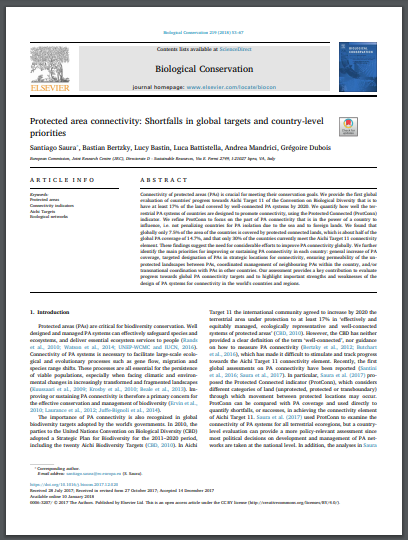
Connectivity of protected areas (PAs) is crucial for meeting their conservation goals. We provide the first global evaluation of countries' progress towards Aichi Target 11 of the Convention on Biological Diversity that is to have at least 17% of the land covered by well-connected PA systems by 2020. We quantify how well the terrestrial PA systems of countries are designed to promote connectivity, using the Protected Connected (ProtConn) indicator. We refine ProtConn to focus on the part of PA connectivity that is in the power of a country to influence, i.e. not penalizing countries for PA isolation due to the sea and to foreign lands. We found that globally only 7.5% of the area of the countries is covered by protected connected lands, which is about half of the global PA coverage of 14.7%, and that only 30% of the countries currently meet the Aichi Target 11 connectivity element. These findings suggest the need for considerable efforts to improve PA connectivity globally. We further identify the main priorities for improving or sustaining PA connectivity in each country: general increase of PA coverage, targeted designation of PAs in strategic locations for connectivity, ensuring permeability of the unprotected landscapes between PAs, coordinated management of neighbouring PAs within the country, and/or transnational coordination with PAs in other countries. Our assessment provides a key contribution to evaluate progress towards global PA connectivity targets and to highlight important strengths and weaknesses of the design of PA systems for connectivity in the world's countries and regions.














